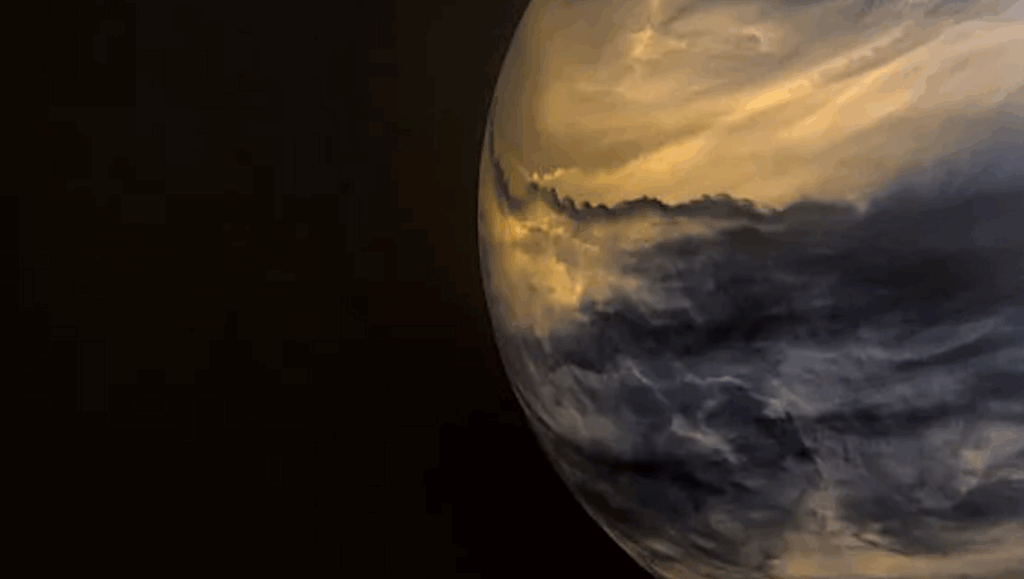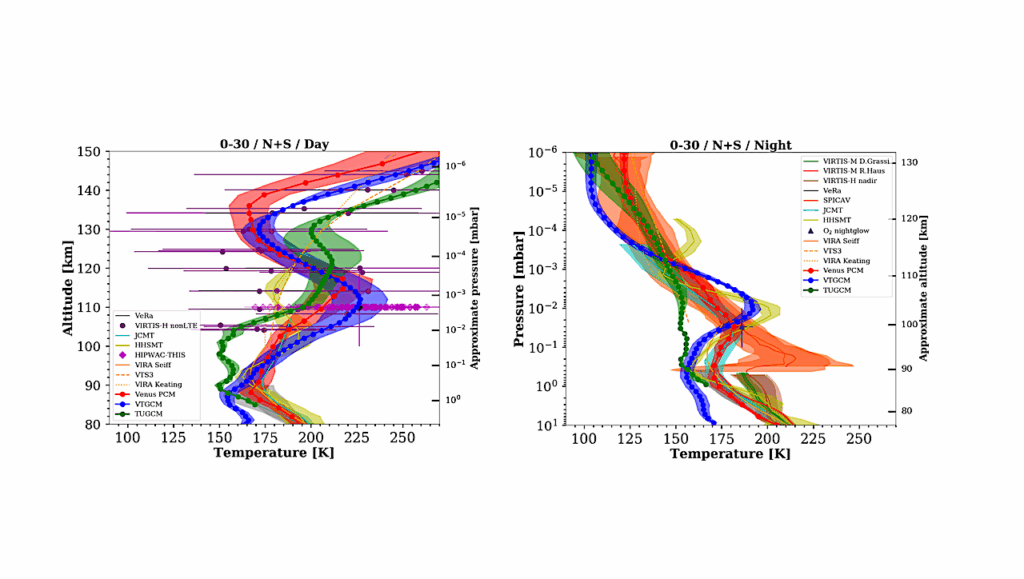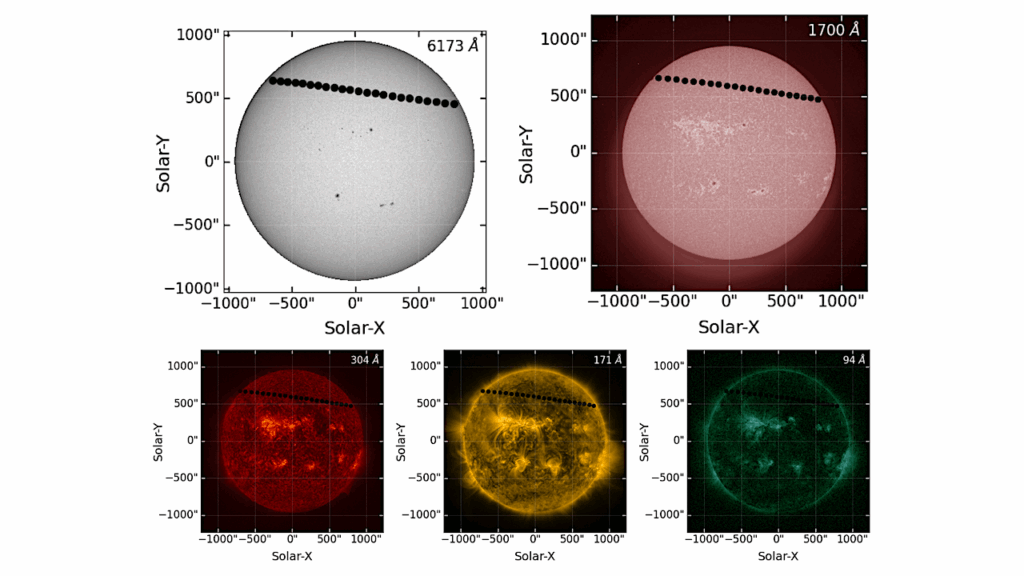Brightness Modulations Of Our Nearest Terrestrial Planet Venus Reveal Atmospheric Super-rotation Rather Than Surface Features

Terrestrial exoplanets orbiting within or near their host stars’ habitable zone are potentially apt for life. It has been proposed that time-series measurements of reflected starlight from such planets will reveal their rotational period, main surface features and some atmospheric information.
From imagery obtained with the Akatsuki spacecraft, here we show that Venus’ brightness at 283, 365, and 2020 nm is modulated by one or both of two periods of 3.7 and 4.6 days, and typical amplitudes <10% but occasional events of 20-40%. The modulations are unrelated to the solid-body rotation; they are caused by planetary-scale waves superimposed on the super-rotating winds. Here we propose that two modulation periods whose ratio of large-to-small values is not an integer number imply the existence of an atmosphere if detected at an exoplanet, but it remains ambiguous whether the atmosphere is optically thin or thick, as for Earth or Venus respectively.
Multi-wavelength and long temporal baseline observations may be required to decide between these scenarios. Ultimately, Venus represents a false positive for interpretations of brightness modulations of terrestrial exoplanets in terms of surface features.
Y. J. Lee, A. García Muñoz, T. Imamura, M. Yamada, T. Satoh, A. Yamazaki, S. Watanabe
Subjects: Earth and Planetary Astrophysics (astro-ph.EP); Instrumentation and Methods for Astrophysics (astro-ph.IM)
Journal reference: Nature Communications 11 (2020) 5720
DOI: 10.1038/s41467-020-19385-6
Cite as: arXiv:2011.09271 [astro-ph.EP] (or arXiv:2011.09271v1 [astro-ph.EP] for this version)
Submission history
From: Yeon Joo Lee
[v1] Wed, 18 Nov 2020 13:35:37 UTC (4,816 KB)
https://arxiv.org/abs/2011.09271
Astrobiology,








